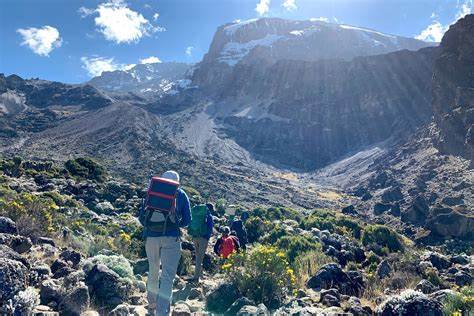Kilimanjaro
Kilimanjaro is Africa's highest peak and one of the world's most iconic natural landmarks. Located in northeastern Tanzania, Kilimanjaro is a dormant stratovolcano that rises majestically from the surrounding plains, towering over the East African landscape.
Here are some key features and highlights of Kilimanjaro:
1. Highest Peak in Africa: Kilimanjaro stands at an impressive elevation of 5,895 meters (19,341 feet) above sea level, making it the highest mountain in Africa and the tallest freestanding mountain in the world. Its snow-capped summit, known as Uhuru Peak, is a coveted destination for mountaineers and adventurers from around the globe.
2. Ecological Diversity: Kilimanjaro is renowned for its remarkable ecological diversity, encompassing five distinct climate zones as climbers ascend from the base to the summit. These zones include cultivated farmland, lush rainforests, alpine meadows, desert-like moorlands, and a glaciated summit. The mountain supports a variety of flora and fauna, including unique species adapted to its harsh and changing environments.
3. Climbing Routes: Kilimanjaro offers several climbing routes to the summit, each varying in difficulty, length, and scenery. The most popular routes include the Marangu Route (also known as the "Coca-Cola Route"), the Machame Route (known for its scenic beauty), the Lemosho Route (offering a longer and more gradual ascent), and the Rongai Route (approaching from the north). Climbers can choose the route that best suits their preferences and experience level.
4. Cultural Significance: Kilimanjaro holds cultural significance for the local Chagga people, who have lived in the mountain's foothills for centuries. The Chagga view Kilimanjaro as a sacred mountain and believe it to be the home of ancestral spirits. Visitors to the region can explore Chagga villages, learn about their traditions and customs, and experience their warm hospitality.
5. Challenges and Rewards: Climbing Kilimanjaro is a challenging endeavor that requires proper preparation, physical fitness, and altitude acclimatization. However, reaching the summit and standing atop Uhuru Peak is a truly rewarding experience, offering breathtaking panoramic views and a profound sense of achievement.
6. Conservation Efforts: Kilimanjaro is protected within Kilimanjaro National Park, which was established to preserve its natural beauty and biodiversity. Park authorities enforce regulations to minimize environmental impact and ensure sustainable tourism practices, including waste management and trail maintenance.
Overall, Kilimanjaro is a symbol of Africa's natural splendor and a bucket-list destination for adventurers and nature lovers alike. Whether you're scaling its slopes or marveling at its grandeur from afar, Kilimanjaro's towering presence leaves an indelible impression on all who encounter it.






